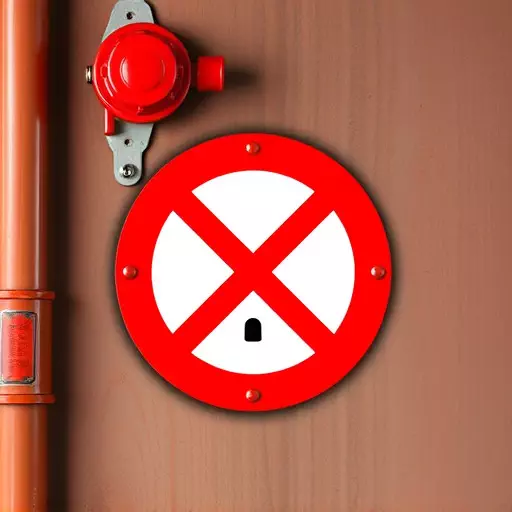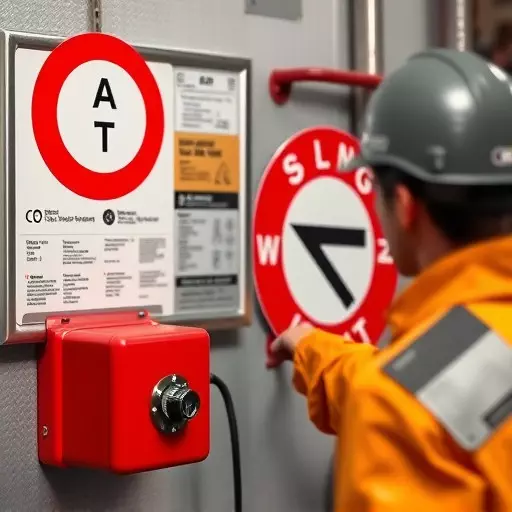Lockout/Tagout (LTO) compliance training is crucial for workplace safety in industries with frequent energy source engagement. OSHA's LTO standards guide safe de-energization of machinery for maintenance, preventing accidental activation. Regular training empowers employees to identify hazards, implement control measures, and follow emergency protocols. Essential components include understanding energy sources, assigning authorized personnel, and using visual indicators like tags and locks. Effective communication through training, updates, and visual aids fosters a culture of safety awareness, addressing concerns promptly in industrial settings.
Effective tagout communication is a critical component of any workplace safety program, particularly when dealing with hazardous energy sources. This article explores essential aspects of lockout/tagout (LTO) compliance training, guided by OSHA’s stringent standards. We delve into the key components of comprehensive energy control procedures training and best practices for conveying LTO protocols to ensure worker safety and prevent accidental injuries or fatalities.
- Understanding Lockout/Tagout (LTO) Compliance Training
- OSHA's Standards for LTO Procedures and Implementation
- Key Components of Effective Energy Control Training
- Best Practices for Communicating LTO Protocols in the Workplace
Understanding Lockout/Tagout (LTO) Compliance Training
Understanding Lockout/Tagout (LTO) Compliance Training is a critical step in ensuring workplace safety, especially in industries where energy sources are frequently engaged and controlled. OSHA’s lockout tagout standards outline essential procedures to de-energize machinery and equipment safely during maintenance or repair. This training equips employees with the knowledge to recognize potential hazards, implement proper control measures, and follow emergency procedures.
The process involves learning energy control procedures, including lockouts and tagouts, as well as the use of warning signs and tags. It teaches workers how to communicate effectively about de-energized equipment to prevent accidental activation. Regular LTO compliance training is not just a regulatory requirement but also a proactive approach to safeguard lives and limbs in industrial settings, fostering a culture of safety at all levels.
OSHA's Standards for LTO Procedures and Implementation
OSHA’s Standards for LTO Procedures and Implementation play a pivotal role in ensuring safety within industrial environments. The organization has established comprehensive guidelines to streamline lockout/tagout (LTO) processes, aiming to prevent accidents involving energy sources during maintenance or servicing. These standards are particularly crucial for industries dealing with hazardous equipment and powerful energy systems.
The OSHA lockout tagout compliance training emphasizes a systematic approach, requiring employers to develop and implement LTO procedures tailored to their specific operations. This involves identifying energy sources within the workplace, classifying them based on potential hazards, and assigning authorized personnel responsible for applying locks and tags. Energy control procedures training ensures workers understand their roles during shutdowns, helping to maintain a safe environment while minimizing disruptions to operational schedules.
Key Components of Effective Energy Control Training
Effective energy control training is paramount for ensuring worker safety in industrial environments. The core components of such training center on comprehensive understanding and implementation of lockout/tagout (LTO) procedures, as outlined by OSHA standards. This involves educating employees on the importance of de-energizing equipment before performing maintenance or repair tasks to prevent accidental activation and resulting injuries.
Training should cover specific energy control procedures tailored to various equipment and systems within a facility. It must also emphasize the critical roles of visual indicators like tags and locks, which serve as clear signals to others that equipment is off and not to be operated. Additionally, training must address proper use and placement of these devices, as well as the responsibilities of both the worker performing maintenance and those ensuring compliance with LTO standards.
Best Practices for Communicating LTO Protocols in the Workplace
Effective communication is key to ensuring successful Lockout/Tagout (LTO) protocols in any workplace. When implementing LTO procedures, it’s essential to provide clear and consistent guidance to all employees through comprehensive training sessions. These sessions should cover OSHA’s lockout tagout standards, emphasizing the importance of energy control and safety measures. By offering regular updates and refresher courses, organizations can ensure that staff members are well-versed in these critical protocols.
In addition to formal training, visual aids and straightforward documentation can greatly enhance LTO communication. Posting clear, easy-to-understand signs around potential hazard areas and maintaining detailed written procedures can serve as valuable references during work processes. Encouraging open dialogue between colleagues and supervisors also facilitates a culture of safety awareness, where questions are encouraged, and concerns are promptly addressed, fostering a more secure working environment.


